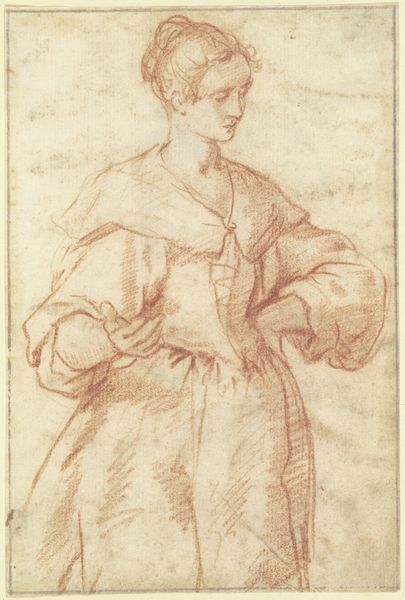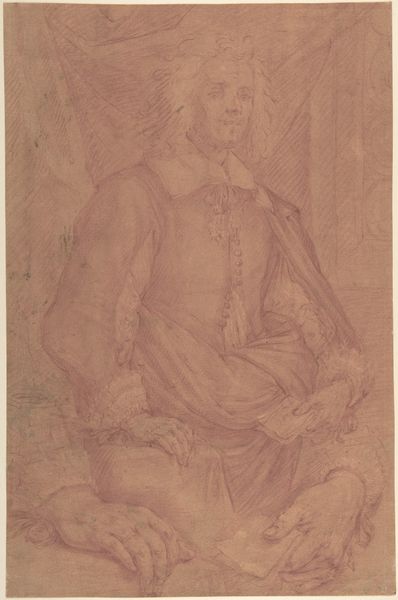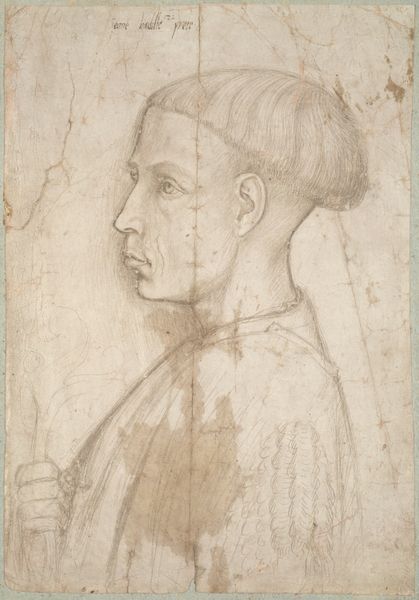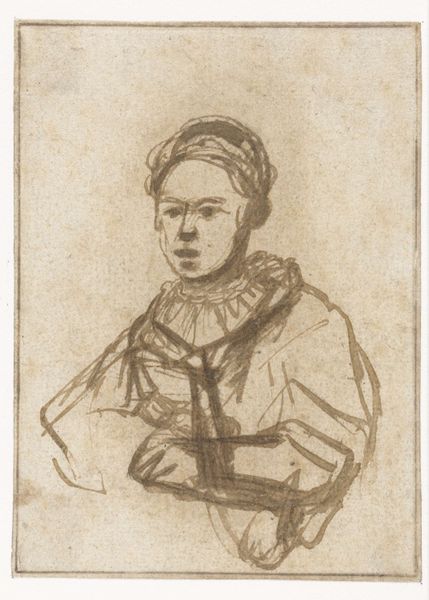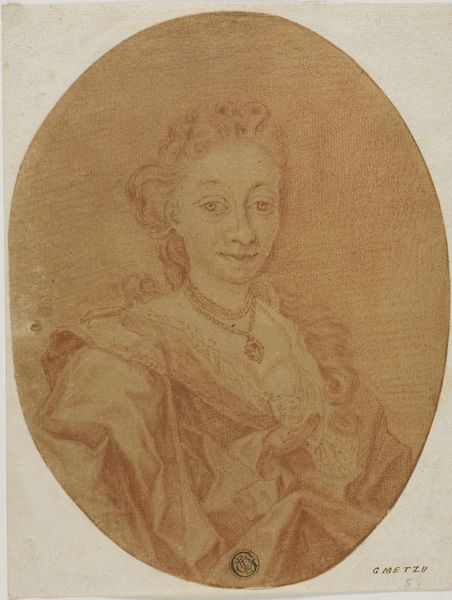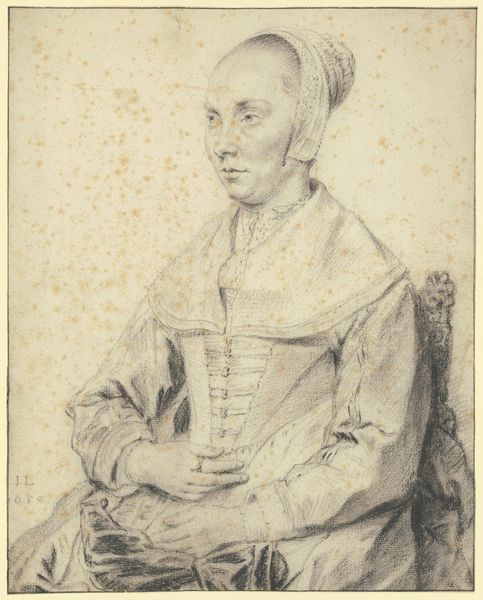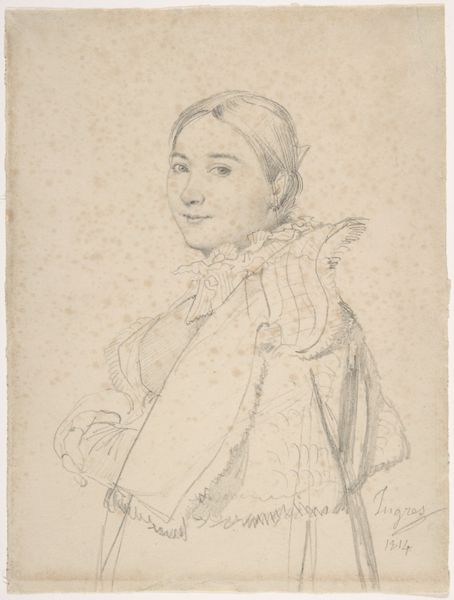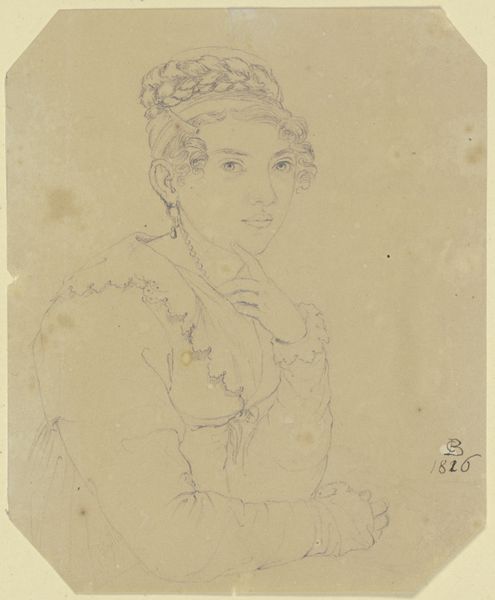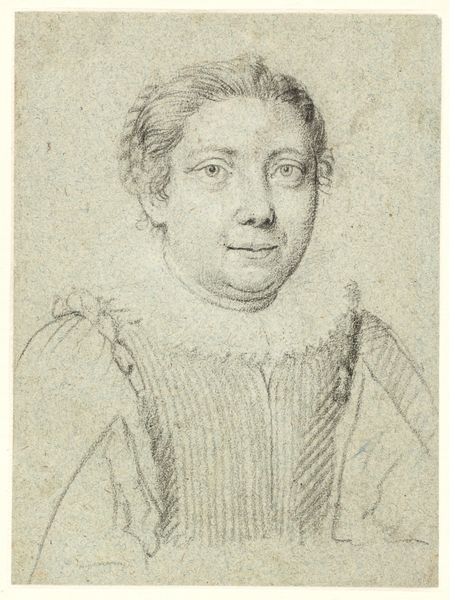
drawing, print, charcoal
#
portrait
#
drawing
# print
#
charcoal drawing
#
figuration
#
charcoal
#
history-painting
#
academic-art
Dimensions: 10 x 7-13/16 in. (25.4 x 19.9 cm)
Copyright: Public Domain
Editor: Here we have a portrait – artist unknown – rendered in charcoal sometime between 1600 and 1700. The limited color palette gives it a somber, almost reserved feel. What aspects of its creation or historical moment particularly resonate with you? Curator: For me, it's fascinating to consider this work not just as a representation of an individual, but as an artifact of early modern artistic production. Think about the charcoal itself, likely sourced and processed locally. The paper, perhaps handmade, represents significant labor. How did the availability of these materials shape artistic choices at the time? Editor: That’s an interesting point, it’s easy to take for granted now the availability of these mediums. Curator: Exactly. Also, portraits in this period were often commissioned, weren’t they? What does this imply about the sitter’s social standing, the artist's patronage network, and the intended audience for this image? It wasn't merely art for art’s sake; it was a commodity circulating within specific social strata. Editor: So, the value isn’t just aesthetic but also deeply embedded in social dynamics. How does the act of creating a "likeness" become part of a bigger power structure? Curator: Precisely. Think about the skill involved in rendering this portrait, the academic art the tag suggests. How much training was needed? Where did the artist acquire those skills? Who had access to that kind of instruction? Every mark carries with it a story about production and access. Editor: I hadn’t considered how each component, the charcoal itself, the paper, the training, all represent these layers of socioeconomic context. Curator: It challenges the notion of the artist as solely a solitary genius. The process is interconnected with material realities and economic forces. That is where the real story is. Editor: I'm leaving with a completely refreshed way of seeing this portrait – it’s not just about the person depicted, but about the world that made its creation possible.
Comments
No comments
Be the first to comment and join the conversation on the ultimate creative platform.
